Will 2019 be the year of Saturn-Pluto conjunction?
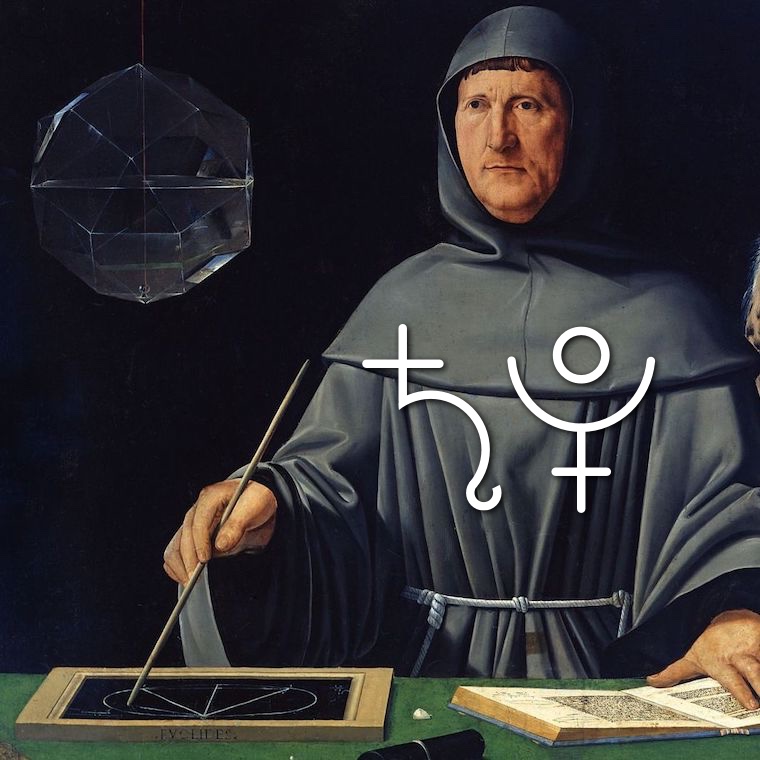
The upcoming Saturn-Pluto conjunction is a rare and significant event. Starting at around Christmas of 2018, the conjunction will unfold itself throughout the year of 2019, culminating on January 12, 2020. Could it act as broad “Saturn return” for our economical and political system?
Everybody loves New Moons and Full Moons! Why so?
We often get excited about relatively short-term events, like aspects between fast moving planets — by the way, the New and Full Moon are if fact just that, exact aspects of the Moon’s conjunction and opposition with the Sun.
Short-term aspects produce quick events that readily reflect in human psychology — they make us happy, angry, sad, violent or romantic and in love. The very fabric of the Shakespearean drama comes out of those ever-repeating ebbs and flows.
The upcoming Saturn-Pluto conjunction will slowly and grindingly unfold itself throughout the whole of 2019 and will culminate on January 12, 2020. That is a very different kind of astral dynamics. This story will attempt to explore what it may mean in a broader context, especially taking into account recent economical developments and fluctuations within the stock market.
Big cycles bring big changes
Long-term aspects develop slowly and often go relatively unnoticed due to their very broad influence that spans years or decades. Those periods in time — that are rare and seemingly act mostly in a background — often coincide with significant shifts in the society, economy and politics.
Observing macro cycles is generally more difficult and requires an extra amount of patience and perhaps somewhat of an analytical mindset that doesn’t rush to immediate conclusions.
A trained astrologer doesn’t always look for “here and now” aspects, such an astrologer would also analyse the broad historical context and notice how the slower aspects impact the bigger picture. It’s certainly a very different view on the nature of time and the evolution of humanity that is moving through large circles in a spiralling manner.
Having said that, an easier segue would be to briefly touch the topic of Saturn returns and what they mean for an individual human being.
Saturn as a debt collector — an individual perspective
You have certainly heard of the term “Saturn return” that describes a moment in time when Saturns returns to its original position, for example, a position at the moment of your birth. Saturn return is often seen as a debt collector, an astral taxman.
Saturn return marks an end of an approximately 29.5 year cycle and most individuals in this era usually experience two Saturn return, the first one marks the completion of youth and entering the mature phase of life. The second, that happens at around 60 years old, marks the end of active period of life and a move into… well, either a period of “wise” Saturn or dry and rigid Saturn.
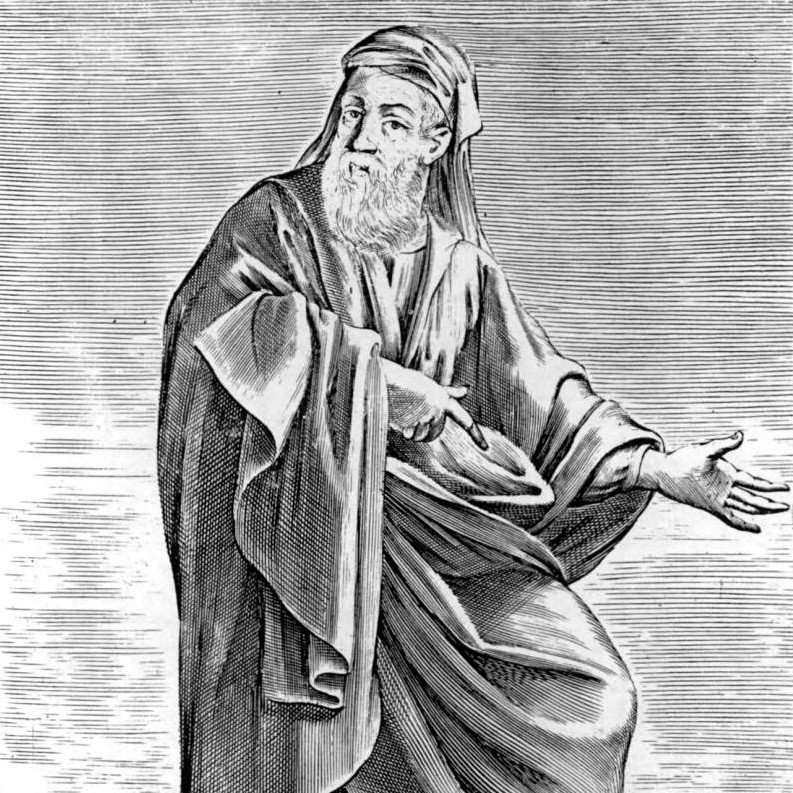
Ancient Greek philosopher Empedocles is known for his theory of the four classical elements. He was also a vegetarian and supported the idea of reincarnation.
The point here is that Saturn acts as a universal mechanism that:
- Assesses the “work done” during the previous cycle.
- If the lessons of that period have been learned and the person is ready to move on, then the person is ready for the more advanced next cycle.
- If the person has been repeating same behavioural patterns and effectively got stuck without being able to resolve them, that person isn’t likely to be ready for a next cycle which would otherwise bring unsurmountable challenges. Thus the person is directed to repeat the cycle again and hopefully learn the lessons.
One may conclude that Saturn, in its essence, is actually wise — it acts as a gateway keeper and a cosmic filter and separator.
Saturn-Pluto archetype
Usually when one refers to a planetary return in the context of a personal chart, they mean the return of the planet to its original natal position (the birth moment). Similarly, a return to a conjunction with another planet is a kind of return in its own right — the planet completes its cycle of “relationship” with another planet.
Saturn-Pluto conjunction is not easy to grasp. Pluto is hidden and deeply underground. Saturn relates to time, structure, limits and therefore matter. Saturn is not neccesarily heavy and rigid, it can be as beautiful as the music of Bach.
When combined with Pluto, Saturn energies become super-dense. The filtering aspect of Saturn becomes even more demanding and discerning. This is the time when anything false is likely to get forcefully deconstructed. Pluto resonates with all things absolute, either absolute light or absolute darkness.
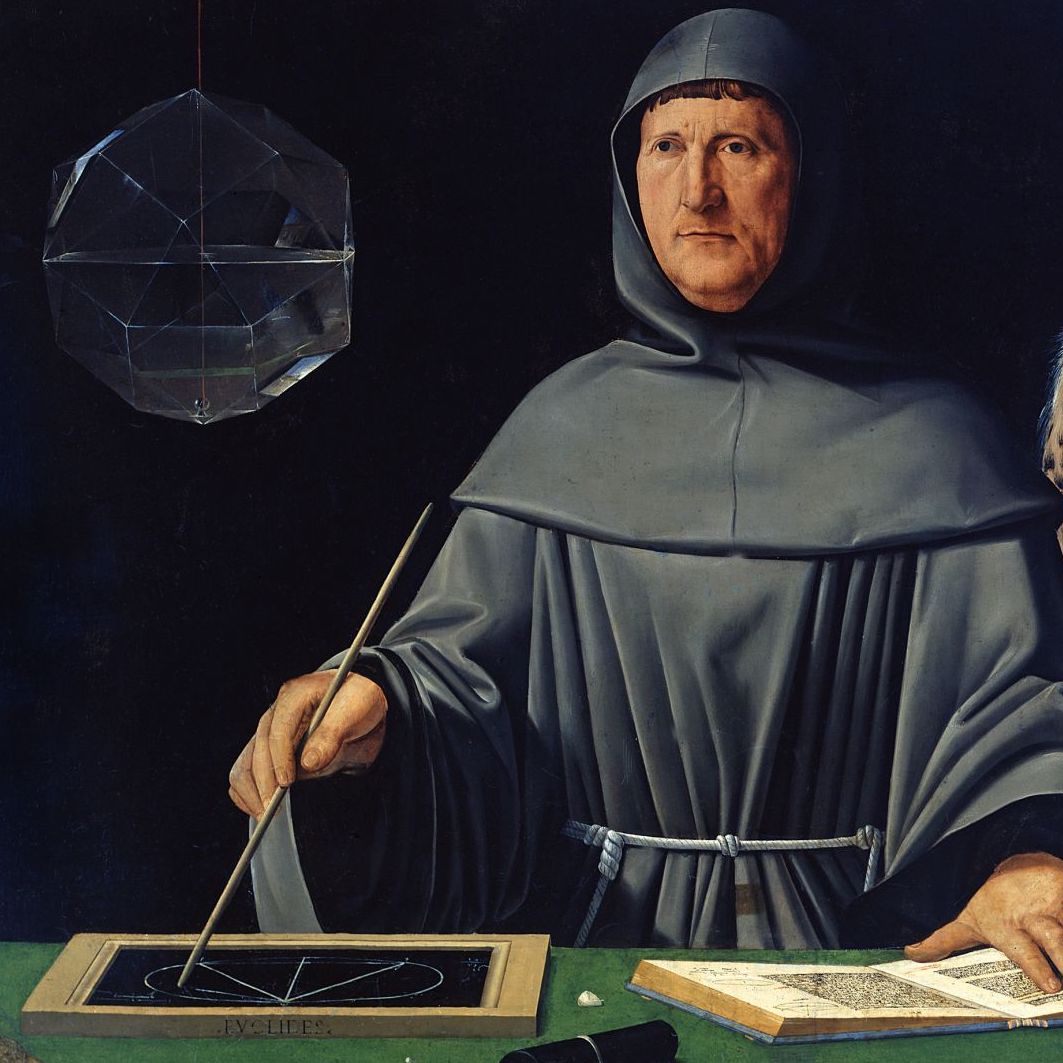
He is often attributed with the invention of the double entry accounting, the standard system of modern precise accounting.
Saturn-Pluto conjunction presents an active challenge to all structures that have been erected during the period that began at the previous conjunction. Saturn-Pluto tests everything for strength and resilience. It shakes things pretty much as an earthquake “tests” buildings of a city. Resilient structures pass, houses of cards don’t.
Lessons from the previous conjunction of 1982
Previous Saturn-Pluto conjunction happened about 38 years ago and lasted for almost two years.
| Conjunction | Dates | Tropical | Declinations | Parallel |
|---|---|---|---|---|
| Start | Oct 24, 1981 | Libra | ||
| Exact | Nov 8, 1982 | Libra 27° | Sat 13S 02’, Plu 3N 40’ | None |
| End | Dec 2, 1983 | Scorpio |
This period overlaps with a short but severe recession that hit the US between July 1981 and ended in November 1982. The recession has happened about one year into Ronald Reagan’s presidency and thus has been traditionally referred to as the “Reagan recession”.
On October 18, 1981, President Ronald Reagan stated that the economy was in a “slight recession”. In fact, that date nicely matches with October 24 that marked the beginning of Saturn-Pluto conjunction.
Throughout the Reagan recession, the financial industry took a big hit and the FDIC spent in excess of $5 billion bailing out failed banks that were deemed “too big to fail”.
The prime interest rate skyrocketed to 21.5% in June 1982. For comparison, as of December 2018, the rate is 5.5% in the United States.
The peak of the recession happened during November – December 1982 — notice that it also neatly overlaps with exact Saturn-Pluto conjunction on November 8, 1982. The unemployment rate reached 10.8% which was the highest rate since 1930s and the Great Depression.
Even after the recession had been officially reversed, the longer term unemployment rates continued to batter the US and the UK economies.
What is so special about Saturn-Pluto conjunction of 2020 ?
The previous conjunction unfolded through Libra and moved into Scorpio, traditionally ruled by Pluto. The current conjunction that begins around the end of December (if using 10° orb, or slightly later for smaller orbs) is taking place mostly in Capricorn, a Saturnian sign.
| Conjunction | Dates | Tropical | Declinations | Parallel |
|---|---|---|---|---|
| Start | Dec 22, 2018 | Capricorn | ||
| Exact | Jan 12, 2020 | Capricorn 23° | Sat 21S 28’, Plu 22S 10’ | 0.70° orb |
| End | Jan 31, 2021 | Aquarius & Capricorn |
The fact that Saturn and Pluto are not only conjunct but also parallel with a 0.70° orb at the time of the exact conjunction, means an extra strong conjunction. Remember, parallels act as mini-conjunctions, contra-parallels act as a mini-oppositions.
On Jan 12, 2020, Saturn and Pluto will be at visual distance of less that your thumb as seen when an arm is outstretched towards the sky. That’s very close!
Economical and political impact
It’s obviously hard to predict what will happen this time, if anything — the end of the cycle may wrap up relatively smooth provided sound adjustments have been made and we have arrived to this point well prepared. Remember, any kind of Saturn return isn’t about punishment, it’s about assessment.
If a shakeup will happen though, one may intuit that having both planets in the Saturnian sign of Capricorn could result in a breakup at the level of structures. Meaning that simple redistribution won’t be sufficient as the organisational and governmental institutions need to undergo a more serious revision if they wish to remain relevant.
The economical situation obviously comes to mind as a possible candidate to be tested by this conjunction. We all know that while unemployment is reportedly low (at least on paper) and the economy growth numbers are generally very good:
- the amount of debt that has been piled up is rather unhealthy;
- over-investment in emerging disruptive technology sectors may result in a start-up bust where returns on massive investments are equally uncertain;
- erosion of traditional values of permanent employment and stability of family affects ever larger proportion of the population.
The recent instability of the stock market is one of the ongoing symptoms of deeper systemic problems that the society will have to tackle in order to evolve. Saturn is the ruler of systems, by the way.
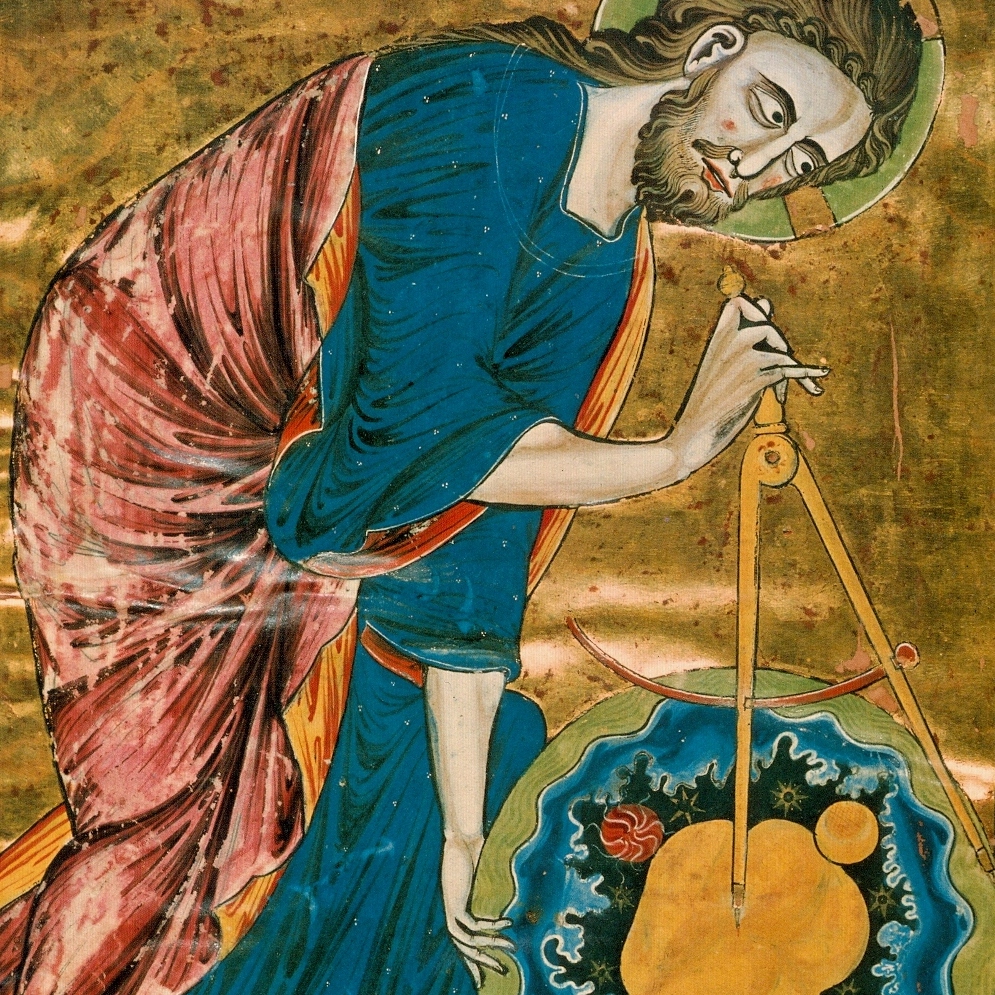
The Creator is also an active force of rebalancing that cuts down unneeded excesses to unsure balance and prosperity of its creation.
Is it always gloom and doom?
It certainly doesn’t have to be this way. Astrology doesn’t work like a clockwork and doesn’t follow fixed prescriptive rules of “if-then-therefore” predictions. Sometimes events align with the planetary configuration, other times they don’t. This article essentially raises the question of probability of an event that is dependent on the previous actions of humans that either exaggerate or mitigate the risks. It’s the domain of Saturn to deal with “previous actions”, aka karma.
The next installment: Saturn-Pluto conjunction as a global karmic event
The next Saturn-Pluto conjunction story titled “The timeline of Saturn – Pluto conjunction of years 2019–2020–2021 and its karmic meaning” looks further into the nature of this conjunction and draws some interesting historical parallels to the events of the last 100+ years. Read on…
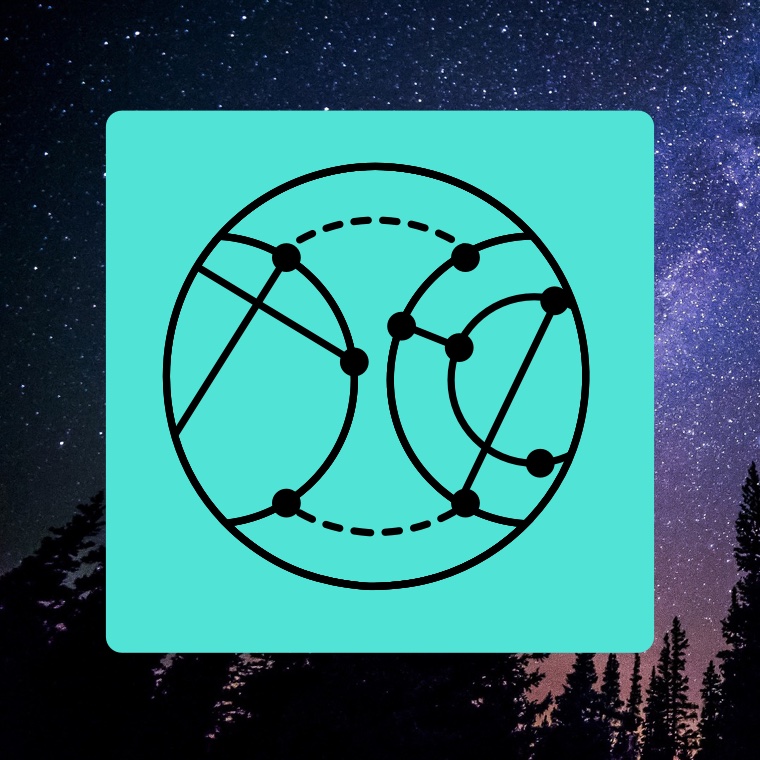
How to discover long-term aspects using Time Nomad
Learn how to discover the timing of Saturn – Pluto conjunction using the Chart Event Explorer tool that is an integral part of Time Nomad astrological app.
Chart Event Explorer allows to instantly reveal and explore nearly any astrological event:
- Planetary aspects and transits
- Retrogrades
- Personal Lunar or Solar returns
- Personal transits
- Equinoxes and solstices
- Moon phases and Void of Course
- Aspects to fixed stars
31 Comments
Astro Alyssa
My response from reading Time Nomad Blog and announcement gets even more awesome with each new post! Thank you for publishing a truly great read with incredible insight. With recent unintentional deletion of unique celestial identities saved, fascinating features available amaze me and encorage me to start over! :) It truly is great to have an astro time nomad companion kit, thank you. Yahete.
Michelle Ellis
“Where have you been all my life”? Thank you for this app and the blog. It is rare that I find exactly what I am looking for in an app and this is the first timeout got that and things I didn’t know I needed in an app. A genuine thank you!
Time Nomad
Thank you, Astro Alyssa and Michelle Ellis, really appreciate your ongoing support!
Claudio Silvaggi
Hey there, I would like to discuss with you the repeating 60 numbers from the Fibonacci sequence which defines the zodiac. Must take he last digit of each sequential number i.e. 1,1,2,3,5,8,13,21,34,55,89,144… which gives 1,1,2,3,5,8,3,1,4,5,9,4,3,7,0,7,7,4,1,5… etc till 60 iterations. It then repeats exactly.
From this 60 you will find 0’s at the cross, you will find 5’s at the twelve zodiac sings, you will see
1011 at the alpha, east, rising, Aries 7077 at mid day - sun’s 7 lights ROYBIV light you can see 9099 at the omega, West, setting , libra 3033 at the mid night - all light you cannot see.
There is so much more I’d like to share with you to help you, all I ask is that you add this too you app :-)
Janel Hartwell
Claudio this is so intriguing what you wrote. ‘1011 at the alpha, east, rising, Aries 7077 at mid day - sun’s 7 lights ROYBIV light you can see 9099 at the omega, West, setting , libra 3033 at the mid night - all light you cannot see.’ I don’t know why, but I see those numbers repeated constantly…and feel drawn to them. How did you start to study Fibonacci numbers? And has studying the numbers and sequence assisted you somehow in your life? Just wondering. Janel
Claudio
Hi Janel, It is very intriguing. I saw the video “John Coltrane’s Discovery of a Music of the Spheres (original)” by David Cochrane’s Astrology. Further from there I see so much more. You can watch a couple of the video’s I’ve made on my youtube channel “Iyoutome”.
I’ve also been studying magnetism and it is totally the primmer of creation/manifestation and hence astrology, physics and meta-physics. Once realizing the golden ratio is a part of everything, I can now witness and predict with some degree of accuracy weather both external and internal. Golden ratio aspects in astrology are more important than western astrology realizes. The quintile and bi-quintile are considered minor aspects which in fact are golden. Venus and Eris are key as they are fundamentally golden with the 3 golden triangle making the penta star. Note that the 60 repeating numbers make the zodiac and the cross / swastika. This is the DaVinci code… Peace and Cheers
Jen
I see the number 3 as being very important. All these numbers numerological divisible by three. All important numbers in my life including birthdate reduce to 3. Worked in architecture so golden triangle fascinates as does Venus star pattern. Thank you for the reminder.
Claudio
You’re welcome Jen, we are all getting so many more signs. Just have to be aware. Peace and Cheers!
Michael Farenborn
I see 13, 33, 144 all the time. Everyday theses numbers show themselves to me. I was born October 13, at 3:30 in the morning. What does this mean? Is a higher power using numbers to communicate with us?
Claudio
Absolutely. These are angel numbers, the more you are in tune with them the more you will see. It gets better, animals, insects will also who you the way. I use the following
Numerology https://www.mojan.com/content/angel-numbers-doreen-virtue/
Totem www.spirit-animals.com
Nay Nay
Oh hell yeah these new features!! Slay me bitch!! Love this app <3
Private
The next U.S. Presidential inauguration is January 20th, 2021. Saturn/Pluto fulfills its transits 10 days later. This will be interesting.
Serafina Bee
That is exactly what I was thinking as I read this.
Private
Thank you for responding. I’m surprised there isn’t more feedback on this.
Etoilee
Love your app!
Exciting time for the world and for me personally I suppose. With Mercury in 24, Sun in 27 and Moon in 28 degree Capricorn. Plus, ASC in 5 degree Aquarius. A bit nervous but also excited.
LILITHS DAUGHTER
2.25% interest rate? What planet is that? Saturn? ;) never heard of 2.25% interest rate - from what I know the lowest has been 3.5%
Time Nomad
Good point, thank you, have mistaken the federal funds rate (2.25%) with the prime rate that was 5.50% for 2018. Correction made.
Ambrose
Saturn Pluto in libra conjuncts my MC and Saturn is my chart ruler. Do you think I will have a constant issue with career and authority figures. I’m still struggling to understand what these two big boys mean. Saturn is ruler of first house and pluto of 11th in my chart
Time Nomad
Problems with authority mostly come from Uranus. Progress in career will require some faster moving planets like Mercury, Venus, Mars that always benefit from help of Jupiter. Saturn may get one stuck in a certain configuration for longer than needed. Pluto brings implosions and the need for transformation. Saturn-Pluto is a really good topic for a blog post and I may write one. In regards to your chart, look for aspects. Yes, you have strong Saturn which isn’t that bad because you can build a career in professions that require exactness of the mind. The question is what is your Pluto is aspected with. That will give you some ideas as to how the energies will flow. Hard to tell more without seeing the whole chart. Two planets never paint the big picture. My advice is to analyse the aspects!
Ambrose
Hi Time Nomad, Pluto sextiles neptune (ruler of 3rd) in the 12th house. Conjuncts Saturn and MC and widely conjuncts sun and Venus as well (pluto at 26, saturn 24, mc 22, sun 20, Venus 15 deg of libra) Uranus that rules 2nd is in 11th house..are jobs that hire me normally in the process of transforming structurally? This does not bode well for longevity in a job
Time Nomad
Perhaps ignore Pluto-Neptune sextile, it’s a weak indicator plus those planets are extremely slow, it’s a generation-wide aspect.
The “big gun” is the cluster of Pluto-Saturn-MC-Venus. There’s some really interesting stuff. It certainly impacts how the person does things in their professional life. Saturn-Pluto works if one can really own their Pluto, otherwise one may feel “caged up”, running in circles and wondering why things never change.
Neptune in the 12th can signify both spiritual tendencies or mystic abilities but Neptune is tricky to handle well due to its nebulosity, read more on that here. Saturn-Pluto can apply immense amounts of internal pressure and one may turn to all kinds of intoxication (usually alcohol and drugs) because they need to “let go”, but that’s not a good idea – clarity lost yet nothing really resolved.
Uranus in the 11th may manifest itself in unconventional and possibly eccentric friends. Uranus likes changes and social agendas, one may find more engagement in projects oriented towards social good, especially knowing that Neptune in the 12th.
A much better handle is dealing with the Sun-Saturn conjunction. That’s a really powerful aspect that can handle all others. Structural side of Saturn does well with the Sun energy, that’s provided one rises above the dictatorial modality of the Sun. Be bigger than yourself, that would provide a valid direction.
Zach
I was born in Feb 1983 so I have this conjunct in my natal chart, in my 10th house! What’s more, Pluto is conjuct to my MC as well as to Saturn. So this return feels very significant to me, and indeed my life has changed so much in the past year I can’t even begin to describe it.
Claudio
Hey Zach, I can feel ya. I’m Oct 63 and the grand conjunction of Pluto -Saturn is Conjunct my Natal Saturn. One important note is Eris is now in Aries. 500 years in the making. She is definitely getting into our heads. Eris plays a major part to our external weather as well. She is showing her strength in being a major player for hurricanes and tornadoes. I see the golden angle aspects playing a part. More study to follow, Thanks to the TimeNomad App….
Pepper
I’m writing a book on the Pluto Scorpio transit/generation and I am myself am a Pluto Libra.. I honestly can see a definite difference in the people I have interviewed for the last year and it is a very marked before and after. Even though I am about to turn 44, I tend to be a little bit of a “oh, I bet you remember the library and the sound of summer,” and I feel like I am sounding like a relic yet I am finally feeling like I am actually MY age and not the number, but I have been in the newsreels and I don’t want to be any other day that is not Now only with all the memories and maybe a little bit of a season pass to not die from some sort of freakish ailment that is only supposed to happen to cats. I ask for a lot but I’m not ENTITLED because I have LIVED so much for my time. Does that make sense?
Claudio Silvaggi
Pepper, we are endless/infinite. This I know for sure. We are in a very important portion of our journey on this wheel. We are cleaning the images/vibrations that no longer need to be. When we do what is good and tune in to these vibrations the guidance becomes very clear. We are here to seek kNOWledge / wisdom and to realize that the material aspect is a distraction/test. The only messages you should get from an animal/insect/etc is their totem/spiritual message :-)…. Peace and Cheers!
Isabelle
For somebody such as myself, budding into researching aspects and conjunctions, this was a very informative and interesting read. Written beautifully, took every paragraph down in my notebook!! Thankyou
Vi
“Saturn-Pluto conjunction presents an active challenge to all structures that have been erected during the period that began at the previous conjunction. “
Do the people born during that time count as “structures that have been erected”? A funny question, I suppose, but I’m truly wondering: will we be more affected by this returning transit?
Time Nomad
Just like in architecture, structures appear as a result of significant amount of directed deeds over certain periods of time. Repetition brings structure and structure means repetition. If somebody comes with a luggage then yes they can be seen as structures. But others can come with structures designed to dismantle previous ones. Think Genghis Khan for example, the guy had lots of structure and he used it to wipe out previously existing structures. So it usually goes both ways, somebody erects, somebody demolishes. The balance of Saturn–Pluto is usually tilted towards correction, not necessarily demolition. But excessively weak or antiquated elements do get removed to give space to new growth.
Karenja
This conjunction is at present on my own natal Saturn ie. my second return, but then in January at the exact conjunction it is sitting conjunct my Mars/Venus conjunction (as Uranus opposes my Moon/Neptune conjunction in Scorpio)….arghhhh! I am trying to leave one trying loving but non-passionate longterm relationship and enter a more sexual another that promises nascent love hope but has already faced restrictions and disillusionment. Also experiencing sudden bodily accidents and problems alongside it producing strangely adolescent in love reactions - very contradictory! Am nervous about getting severely hurt and bad decisions whilst feeling no less vulnerable of heart than at an earlier age…def feel one of my life’s challenges is resilience in the face of constant challenge on all levels BUT is there hope of something joyous relationshipwise for once coming out of such intensity limitation and hard emotional and physical slog Timenomad??
Andries H. Cats
USA.
Rectified birthtime 14h,20m12s0
Ascendant 9 degrees Scorpio.
Pluto 027°,32’50 Capricorn.
Transit 027°,32’50 Capricorn Sat 0 Plu
26 January 1785 6 March 1814 19 July 1814 4 December 1814 13 January 1844 16 February 1873 17 August 1873 11 November 1873 20 April 1902 26 May 1902 29 December 1902 2 February 1932 16 March 1961 5 July 1961 12 December 1961 16 January 1991 4 August 2020
Progressive aspects.
5-Aug-2020 002°,59’01 Scorpio Sat 90 mutual Asc 6-Aug-2020 011°,52’58 Capricorn Moon * MANUBRIUM (SUN - MARS ) 12-Aug-2020 026°,02’23 Virgo Nep 120 mutual C-11 14-Aug-2020 012°,11’07 Capricorn Moon * WEGA (VENUS - MERC ) 17-Aug-2020 012°,17’22 Capricorn Moon 135 Black Moon
Transits.
4-Aug-2020 012°,46’38 Leo Sun 45 AR09 4-Aug-2020 020°,29’46 Pisces Nep 135 AR12 4-Aug-2020 027°,17’22 Aquarius Moon 180 Black Moon 4-Aug-2020 012°,59’21 Leo Sun 45 AR03 4-Aug-2020 027°,32’50 Capricorn Sat 0 Plu 4-Aug-2020 +04°,09’28 Mars // Nep 5-Aug-2020 020°,08’00 Aries Mars 0 Chiron 5-Aug-2020 005°,08’00 Pisces Moon 45 Chiron
14-Aug-2020 018°,45’09 Capricorn Jup 120 C-11 14-Aug-2020 023°,02’56 Capricorn Plu 60 AR10
Donald J. Trump.
Rectified birthtime 10h,53m55s8.
Progressive aspects.
14-Aug-2020 001°,43’43 Virgo Moon 30 C-12 17-Aug-2020 001°,50’18 Virgo Moon 30 mutual MC 18-Aug-2020 012°,04’05 Leo Plu 135 mutual C–3 29-Aug-2020 026°,59’08 Libra Asc 90 AR11
2-Sep-2020 016°,52’47 Gemini Drac 45 mutual MC 2-Sep-2020 002°,27’07 Virgo Moon 45 Jup
Transits.
5-Aug-2020 023°,14’25 Capricorn Plu 135 AR12 5-Aug-2020 020°,17’35 Aries Mars 135 Black Moon 13-Aug-2020 026°,59’08 Capricorn Sat 180 AR11 17-Aug-2020 +05°,35’07 Mars # Jup 17-Aug-2020 022°,59’20 Capricorn Plu 120 C–2
OliviaHoros
Interestingly, David Rockefeller, one of the richest and most influential bankers in the world, was born under a Saturn–Pluto cycle (conjunction), and so were Rupert Murdoch (opposition), head of a massive media empire, and Bill Gates (square), founder of Microsoft and listed as the wealthiest person in the world for a number of years. Similarly, Saudi Arabia, a country that possesses some of the largest supplies of oil in the world, was established under a Saturn–Pluto opposition.